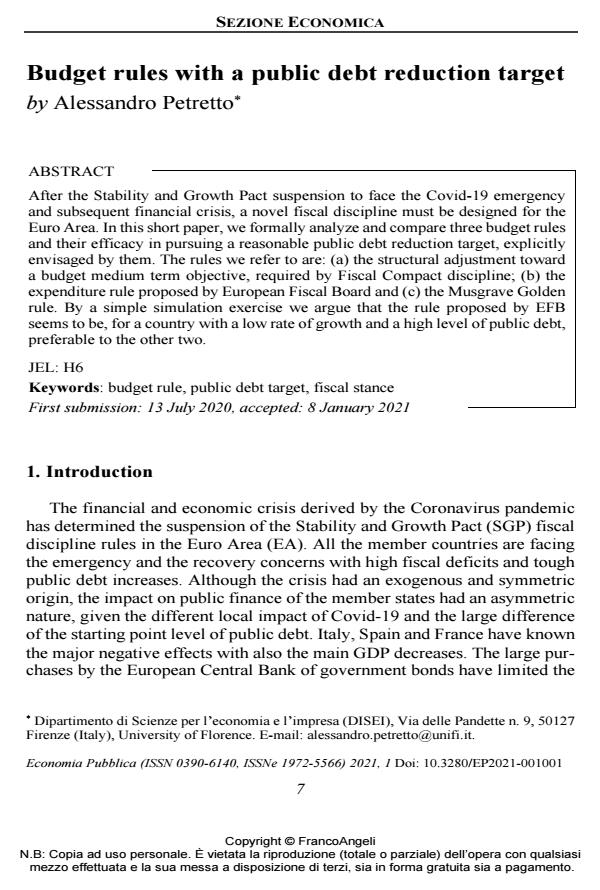Budget rules with a public debt reduction target
Journal title ECONOMIA PUBBLICA
Author/s Alessandro Petretto
Publishing Year 2021 Issue 2021/1
Language English Pages 18 P. 7-24 File size 148 KB
DOI 10.3280/EP2021-001001
DOI is like a bar code for intellectual property: to have more infomation
click here
Below, you can see the article first page
If you want to buy this article in PDF format, you can do it, following the instructions to buy download credits

FrancoAngeli is member of Publishers International Linking Association, Inc (PILA), a not-for-profit association which run the CrossRef service enabling links to and from online scholarly content.
After the Stability and Growth Pact suspension to face the Covid-19 emergency and subsequent financial crisis, a novel fiscal discipline must be designed for the Euro Area. In this short paper, we formally analyze and compare three budget rules and their efficacy in pursuing a reasonable public debt reduction target, explicitly envisaged by them. The rules we refer to are: (a) the structural adjustment toward a budget medium term objective, required by Fiscal Compact discipline; (b) the expenditure rule proposed by European Fiscal Board and (c) the Musgrave Golden rule. By a simple simulation exercise we argue that the rule proposed by EFB seems to be, for a country with a low rate of growth and a high level of public debt, preferable to the other two.
Keywords: Budget rule, public debt target, fiscal stance
Jel codes: H6
Alessandro Petretto, Budget rules with a public debt reduction target in "ECONOMIA PUBBLICA " 1/2021, pp 7-24, DOI: 10.3280/EP2021-001001